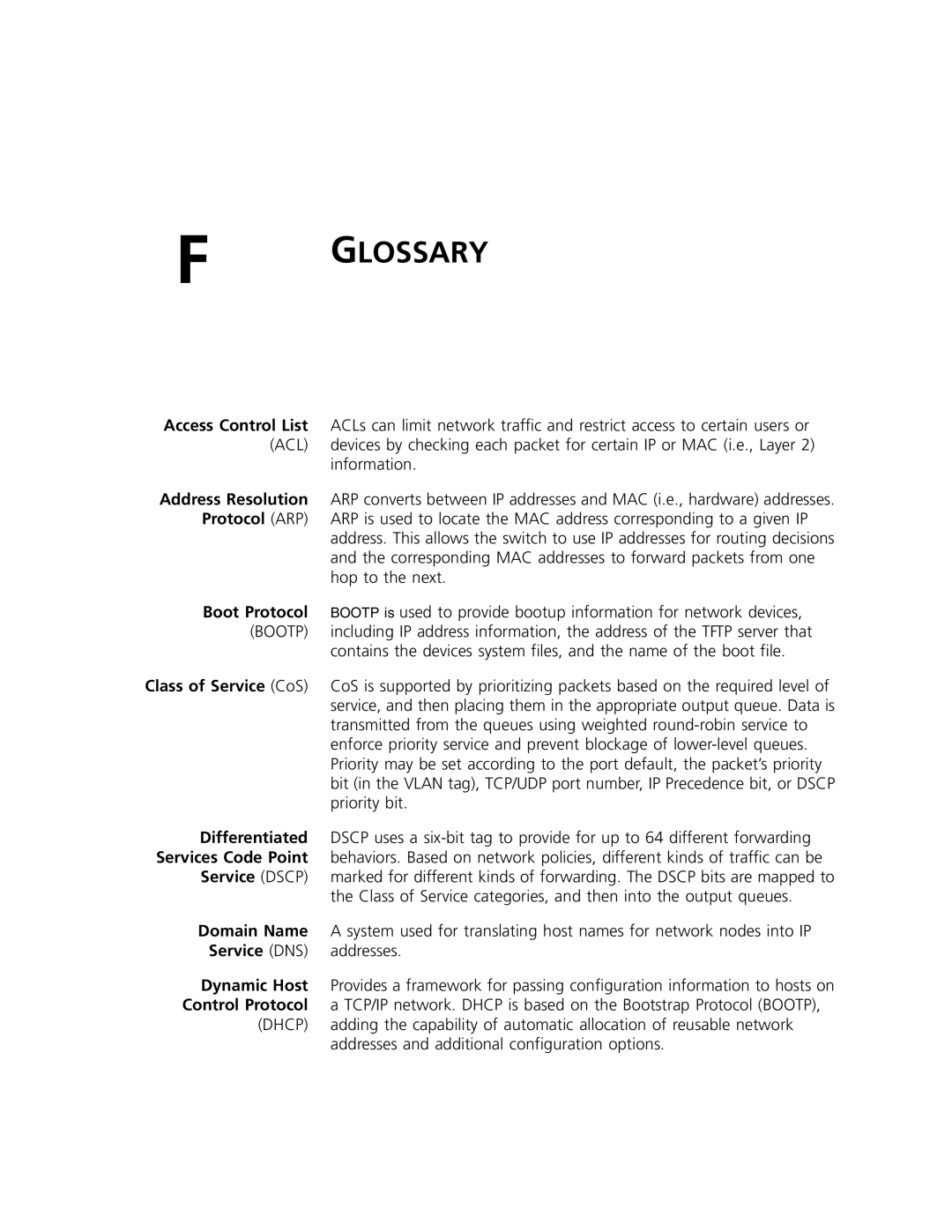F GLOSSARY
Access Control List | ACLs can limit network traffic and restrict access to certain users or |
(ACL) | devices by checking each packet for certain IP or MAC (i.e., Layer 2) |
| information. |
Address Resolution | ARP converts between IP addresses and MAC (i.e., hardware) addresses. |
Protocol (ARP) | ARP is used to locate the MAC address corresponding to a given IP |
| address. This allows the switch to use IP addresses for routing decisions |
| and the corresponding MAC addresses to forward packets from one |
| hop to the next. |
Boot Protocol | BOOTP is used to provide bootup information for network devices, |
(BOOTP) | including IP address information, the address of the TFTP server that |
| contains the devices system files, and the name of the boot file. |
Class of Service (CoS) | CoS is supported by prioritizing packets based on the required level of |
| service, and then placing them in the appropriate output queue. Data is |
| transmitted from the queues using weighted |
| enforce priority service and prevent blockage of |
| Priority may be set according to the port default, the packet’s priority |
| bit (in the VLAN tag), TCP/UDP port number, IP Precedence bit, or DSCP |
| priority bit. |
Differentiated | DSCP uses a |
Services Code Point | behaviors. Based on network policies, different kinds of traffic can be |
Service (DSCP) | marked for different kinds of forwarding. The DSCP bits are mapped to |
| the Class of Service categories, and then into the output queues. |
Domain Name | A system used for translating host names for network nodes into IP |
Service (DNS) | addresses. |
Dynamic Host | Provides a framework for passing configuration information to hosts on |
Control Protocol | a TCP/IP network. DHCP is based on the Bootstrap Protocol (BOOTP), |
(DHCP) | adding the capability of automatic allocation of reusable network |
| addresses and additional configuration options. |
